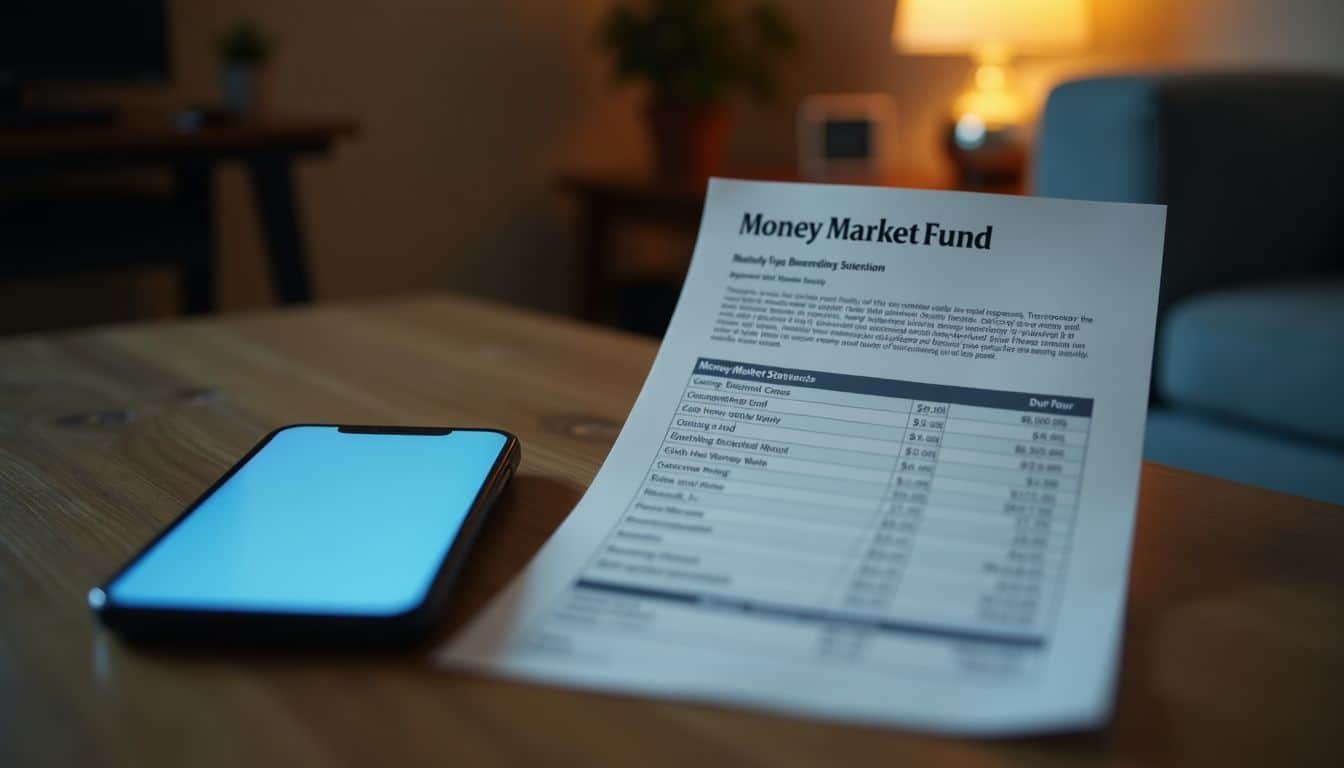Money zips around these days faster than a text from your crush. Enter stablecoins—digital coins tied directly to stable currencies like the US dollar. Unlike Bitcoin, which jumps around crazier than my dog hearing the mail carrier, stablecoins take away that stress and keep things smooth—even if the market goes wild.
Sending money overseas can eat up fees worse than movie theater popcorn eats my paycheck. Stablecoins cut down those fees, letting you send money faster, cheaper, and stress-free. And let’s face it, banks aren’t exactly famous for speed. Ever waited days for your check to clear? Stablecoins ditch the waiting game, making payments instant—think texts, but for cash.
Stablecoins also make it easy for folks without banks to join the money game. No bank branch nearby? No worries. All you need is a phone and internet, and boom, you’re golden. They’re simple, secure, and ready for everyone to use—grandpa included.
Key Takeaways
Stablecoins fix Bitcoin’s roller coaster price swings by tying their value closely to steady assets, mostly the US dollar—making them friendlier for daily spending.
Already worth a hefty $215 billion, the stablecoin market zips money across borders quicker than old-school banks, knocking those pesky 3-6% fees down to less than 0.1%.
About 1.7 billion adults still live without bank accounts—the good news is stablecoins let them get financial services with just a smartphone and Wi-Fi.
Big-name brands like Shopify and Overstock have jumped aboard to accept stablecoin payments, slashing transaction fees by almost 70% compared to credit cards—enough savings for a decent pizza night.
After the messy collapse of Terra Luna in 2022, governments around the globe are hustling to set clearer rules, making stablecoins safer without spoiling the fun of shaking up worldwide payments.
Table of Contents
What Are Stablecoins?

Stablecoins are digital assets that keep their value steady by linking to real-world items like the US dollar or gold. They solve the wild price swings that plague Bitcoin and other cryptocurrencies, making them better for everyday payments and cross-border transfers.
Definition and key characteristics

Think of stablecoins as crypto’s calm, sensible cousin. Unlike Bitcoin’s wild mood swings, these digital coins stay anchored to dependable stuff like the US dollar, gold, or other trusted financial assets.
Their whole appeal lies in letting you make quick blockchain payments, minus the heart-stopping price changes. A while back, I tried a USDT payment gateway for some business deals, and honestly, its steadiness was a breath of fresh air.
Right now, stablecoins are worth around $162 billion—that’s no small potatoes—and act as a handy bridge between traditional banking and modern digital payments.
It’s kind of like choosing a reliable family sedan instead of a flashy sports car; it might not turn heads, but it’ll comfortably take you where you want to go without drama.
Fast transfers, transparent blockchain tracking, and prices you can actually count on—that combo’s tough to beat.
One of the stablecoins I’ve come across most often is Tether (USDT), and it’s tied to the US dollar. Each token is backed by actual dollars or assets of the same worth, keeping its price tightly pegged to one buck.
Tried and true, stablecoins give you crypto-style convenience along with old-school financial dependability.
Types of stablecoins: fiat-backed, crypto-backed, algorithmic

Stablecoins aren’t all created equal—each one has its own trick to keep steady value. Let’s take a quick stroll through today’s main stablecoin varieties:
- Fiat-backed coins keep actual currency, like US dollars, parked safely in bank accounts. Coins like Tether and TrueUSD hold exactly one dollar for every token issued, making them simple and clear for crypto newbies.
- Commodity-backed coins tie their worth to real-world stuff like gold or silver. Tether Gold, for instance, gives token holders access to actual gold bars—real metal you can touch, not just numbers on a screen.
- Crypto-collateral coins rely on other cryptocurrencies stored as security. MakerDAO’s Dai, for example, always keeps extra crypto as collateral—more than the coin’s worth—to provide a buffer if crypto markets go south. It’s a clever way to keep stable prices using digital currency itself.
- Algorithm-based coins use computer code and smart contracts to tweak how many coins float around. TerraUSD famously tried this route, until its stunning collapse last year shook everyone holding digital cash.
- Multi-collateral coins mix several assets together, spreading risks across multiple methods. By blending different backings, hybrid stablecoins aim to dodge the risks that come with relying on just one asset, while keeping quick, borderless transfers easy and smooth.
The Role of Stablecoins in the Financial System

Stablecoins act as a bridge between old-school banking and the wild west of digital assets. They speed up money transfers across borders while cutting out middlemen who charge big fees.
These digital dollars also fuel the growing DeFi ecosystem where folks can lend, borrow, and trade without traditional banks getting involved.
Bridging traditional finance and digital assets
Think of stablecoins as that friend who’s calm and steady while everyone else panics. They’re the digital money world’s safe pit stop, helping you move cash between your bank account and crypto without the rollercoaster prices Bitcoin and Ethereum are famous for.
Users are advised to review audit reports and reserve disclosures provided by stablecoin issuers. Third-party verifications add confidence and detail to the overall financial picture.
Today, they’ve grown up significantly—market values top $215 billion, a long climb from their humble start as basic trading tokens.
Even those skeptical bank folks and old-school regulators have changed their tune lately. Now banks see stablecoins as reliable options for paying bills, earning interest, or sending money overseas without the usual international hassle.
Jeremy Allaire, CEO of Circle, put it neatly: “Stablecoins represent the perfect handshake between traditional financial systems and blockchain innovation”.
Who knew digital cash could become so mainstream? Turns out boring can sometimes be brilliant.
Enabling faster cross-border transactions
Bridging traditional and digital money systems is changing the game for global payments. Stablecoins cut cross-border transfers down from days to mere seconds, which makes the SWIFT network look like your grandpa’s dial-up internet.
Users should review fee schedules and transaction disclosures to ensure transparency in operations.
Imagine sending cash halfway around the globe for a few cents, rather than wasting money on those steep fees banks love so much. Businesses needing fast overseas transactions find stablecoins a lifesaver, especially small companies running tight deadlines.
Folks sending money to relatives in another country also get relief from blockchain tech—no more waiting and worrying about delays or unnecessary charges. Stablecoins give people quick options, putting banks on notice that slow and costly just won’t cut it anymore.
Supporting decentralized finance (DeFi) ecosystems
Stablecoins power DeFi’s explosion, letting traders catch their breath between wild crypto gambles. Almost half—around 45%—of the cash zipping through decentralized exchanges comes straight from stablecoins; they’re like grease that keeps DeFi’s wheels turning without a squeak.
I’ve personally seen my DeFi holdings rise nicely by parking funds in stablecoin liquidity pools: interest payments that put banks’ measly savings rates to shame.
Advantages of Stablecoins

Stablecoins offer rock-solid price stability that other cryptocurrencies just can’t match, making them perfect for everyday payments and cross-border transfers. They open doors to financial services for millions without bank accounts while cutting out middlemen and their fees.
Blockchain technology backs these digital currencies with clear records anyone can check, unlike the black box of traditional banking. These benefits could shake up the global financial system by giving people more control over their money.
Price stability compared to other cryptocurrencies
Ever seen Bitcoin nosedive 30% in one day? I remember staring at my screen, coffee in hand, heart sinking. Meanwhile, my USDC barely budged—a calm island in crypto’s stormy seas.
Crypto like USDC stays steady because each coin links directly to solid assets, like the good old US dollar. Anchoring their value to stable assets means you can depend on your digital cash for daily buys, big or small.
Need to pay your buddy overseas for those concert tickets he snagged for you? Digital dollars like USDC work fast and cheap, with values you can trust today, tomorrow, next week—whenever he finally asks you to pay up.
They shine brightest for online shopping and international transfers, where knowing exactly what each buck is worth really counts.
Sure, blockchain gives these digital dollars their speed and security. But it’s the steady-as-she-goes value that makes them heroes for online payments. Safe harbors like USDC help you spend smarter, not harder—without the Bitcoin rollercoaster.
Increased accessibility to financial services
Stablecoins tear down barriers for the 1.7 billion adults around the globe who don’t have bank accounts. I’ve watched these digital tokens help people in far-off villages send cash back home without the crazy fees you’d see with Western Union.
One buddy of mine working construction in Dubai used to waste his Sundays waiting in lines, just to wire cash home. Now, he kicks back with his phone, taps a few buttons, and boom—funds land instantly in his mom’s digital wallet.
Plus, stablecoins don’t sleep; they’re always open, unlike banks that shut their doors on weekends and holidays.
Someone once told me that stablecoins are like the perfect bridge for folks stranded by the traditional banking system.
Enhanced transparency through blockchain technology
Blockchain hands stablecoins a clear edge over plain old cash—you can track every move they make. Think of it as a group notebook, shared openly, telling you exactly who’s got what, and when things change hands.
Crooks hate it because it makes sneaking shady stuff through the cracks almost impossible. Once that data hits the ledger, it’s stuck there, locked up tight by solid end-to-end encryption.
If you’re someone who values knowing precisely where every dollar winds up, blockchain clears away the smoke and mirrors traditional banks sometimes throw in your path. No more sketchy backroom dealings or phantom transactions hiding just out of reach.
Challenges Facing Stablecoins

Stablecoins face major hurdles like unclear rules from financial action task forces and the risk of bankruptcy that could shake the entire payments system. Hackers target these digital assets regularly, making security a top worry for users who store their money in these new financial tools.
Plus, some big players like Telegram have tried and failed to launch their own coins, showing how tough the road to mainstream adoption really is. Want to know how these challenges might be solved? Keep reading!
Regulatory uncertainties
Stablecoin regulations vary wildly, country to country, making life tricky for businesses and everyday users. The messiness became crystal clear after the Terra Luna disaster hit in 2022—thousands lost their savings overnight, all thanks to a coin claiming to be rock solid.
Financial Action Task Forces and central banks aren’t sitting idle; they’re pushing hard for a common set of rules to protect folks like you and me. Working together is the only way nations can build trust and help stablecoins find their footing in global payments.
After all, no one wants another rollercoaster ride like that Terra Luna fiasco—once was more than enough.
Regulatory clarity from official institutions assists users in understanding potential risks and fosters a more secure market environment.
Potential risks of centralization
Centralized stablecoins hand way too much power to just a few big names. Imagine putting Visa or Mastercard into a digital superhero costume, giving them full control over your online wallet.
Scary thought, right? They’d get a front-row seat to your spending patterns, and could even cut your shopping spree short or lock your money altogether. Crypto was born to give people freedom from money gatekeepers, not to crown some new digital overlords.
We’ve already seen this movie with traditional banks, where a small group pulls strings affecting millions. Handing financial reins to a select few players is asking history to repeat itself.
Rapid growth of these digital dollars, combined with vague rules and cozy ties to old-school finance, creates a ticking time bomb for your wallet.
It gets worse for international shoppers and online businesses. Imagine you’re clicking “buy now” at your favorite online store, but your payment gets blocked because someone doesn’t like your taste in sneakers.
Crypto millionaires didn’t chase centralized control; they ran away from it. As one popular crypto saying goes, “The greatest threat to stablecoins isn’t technology failure but power concentration”.
Independent audits help monitor reserve management and reduce centralization risks.
Concerns around security and fraud
Stablecoins aren’t just facing issues tied to centralization; plenty of security pitfalls and scams lurk around too. Hackers, crafty as raccoons rifling through garbage cans, hit crypto exchanges constantly—your money, sitting quietly on the blockchain, isn’t as safe as it might seem.
I’ve watched friends panic after bugs in “smart contracts” froze huge amounts, locking millions with zero warning, exactly like what hit major platforms last year.
Reviewing independent smart contract audits and security certifications can help users protect their assets against fraud.
Stablecoins and Global Payments

Stablecoins are changing how money moves across borders, making it cheaper and faster than old-school bank transfers. They cut out the middlemen in global payments, which means workers can send more money home to their families without losing chunks to fees.
This shift could reshape e-commerce too, as buyers and sellers trade across countries without currency headaches or credit card charges. Blockchain technology powers these transfers, creating a digital trail that’s harder to use for terrorist financing than physical currency.
Monitoring fee structures and periodic audits contributes to a secure global payment system.
Impact on international remittances
Sending cash across borders used to mean big fees, long waits, and too many headaches. Now, stablecoins flip that on its head—cutting costs down below 0.1%, compared to the traditional 3-6% fee banks love charging.
Think about a mom working abroad, sending money back home—she gets to keep more of that paycheck, and her family receives a bigger share, all because blockchain tech skips past those greedy middlemen.
Gone are the days of waiting around for transfers. Instead of crawling along at bank speed (think three-to-five business days and endless forms), stablecoin transactions move within minutes.
They’re like the express lane of international finance, zipping your funds through without piling on fees at every stop. No surprise, then, that each new month sees more addresses sending these digital coins.
And more folks discover how good it feels to avoid banks’ sneaky charges.
Users benefit from transparent transaction records and low fee structures when using stablecoins for remittances.
Potential to replace correspondent banking systems
Stablecoins aren’t just trimming remittance fees—they’re rattling the cages of the banking dinosaurs. Currently, sending money across borders means playing tag with multiple banks, each one grabbing their cut, and dragging out the timeline.
Stablecoins hop right over this messy game, shifting your cash instantly through blockchain channels. No bank chain, no pricey middle guys, just direct, quick transfers. That’s bad news for the traditional correspondent banking market, valued at a hefty $2 trillion.
Banks just can’t compete with these speedy transactions and wallet-friendly fees.
This alternative system challenges traditional correspondent banking by emphasizing speed and cost efficiency.
Use cases in cross-border e-commerce
Online shopping isn’t what it used to be—and stablecoins are shaking things up even more. Imagine buying your favorite Italian shoes without handing banks a fistful of fees each time.
Thanks to these digital coins, sellers can take payments from shoppers halfway around the globe without getting gouged on transaction charges. Businesses can now zip payments across continents to suppliers or freelancers almost instantly, skipping bank delays altogether.
E-commerce platforms benefit from reduced costs and improved transaction speed, which can boost overall efficiency.
Stablecoins and Monetary Policy

Stablecoins could shake up how central banks control money flow and interest rates in our economy. Their growing use might force a rethink of US dollar dominance and push more countries to develop their own central bank digital currency as a response.
Observations of stablecoin performance offer valuable insights for central bank digital currency (cbdc) initiatives.
Implications for central banks
These stablecoins are shaking things up for central banks, big-time. I’ve noticed these digital assets make it harder for banking authorities to control how much money floats around.
They chip away at the strength of typical monetary policy moves, too. Central banks now face a tricky fork in the road: resist these new digital tokens or hop onboard with their own digital money—known as CBDCs.
But jumping into the digital currency race isn’t a free ride, either. It takes resources, careful planning, and brings real economic headaches along for the journey. Striking a balance is the tough nut to crack here.
Central bank digital currency (cbdc) initiatives and regulatory adjustments will shape the future of monetary policy.
Interaction with central bank digital currencies (CBDCs)
Stablecoins and CBDCs will likely coexist, sharing the digital money scene instead of clashing directly. I’ve seen this happen pretty clearly with China launching trials of its digital yuan (eCNY), aiming to pull more people into banking.
Actually, central banks admit stablecoins gave them the nudge they needed to start their own digital currencies. Funny enough, before launching national digital money, they’re setting guidelines to keep private stablecoins in check.
This two-directional game highlights how blockchain tech is shaking up finance from every angle possible.
Monitoring developments in CBDCs provides key context for stablecoin adoption strategies.
Effects on inflation and interest rates
Central banks are checking out digital currencies, but stablecoins already shake things up. Digital assets could change inflation by speeding up and simplifying global trade—think PayPal’s recent move to accept them.
Even interest rates might feel the ripple effect, since payments clear in seconds, not days. Last week, I sent money overseas using stablecoins and saw fees dip way below the usual bank wire charges.
This kind of fee-slashing could cut costs across finance, opening doors to lower prices on things we buy every day. Imagine buying your favorite snack without paying an extra dollar for bank transfers hidden in the price—now that’s something to finally smile about.
Data analysis suggests that lower transaction costs may contribute to moderate inflation pressures over time.
Innovations in Stablecoin Technology

Stablecoin tech is evolving fast with multi-collateral systems that use several assets as backing instead of just one. These digital coins now work with smart contracts on blockchains, making money truly programmable for the first time in history.
Independent audits and transparent reserve reporting support the growth of these evolving technologies.
Multi-collateral stablecoins
Multi-collateral stablecoins spread their eggs across multiple baskets, backing their price with different assets rather than relying on just one. They’re speedy little tools, settling payments in the blink of an eye, and handling smart programs with ease.
Banks and businesses swear by them to zip money abroad without the typical snail-paced hassle. Blockchain’s transparent logs keep everyone honest, leaving sleazy deals little room to breathe—something big finance players particularly value.
A buddy of mine running an online shop swears these multi-asset coins save him headaches when paying suppliers overseas. As crypto users chase reliability for everyday payments, multi-collateral stablecoins keep popping up everywhere like coffee shops in Seattle.
Diverse asset backing can lower risks and support price stability.
Programmable money and smart contracts
Forget plain old cash, stablecoins on programmable systems can do tricks dollars only dream about. Smart contracts are like little robot deals that automatically kick in once specific conditions appear on a blockchain.
Say the government owes you stimulus money, a smart contract spots it and zap—funds land straight into your digital wallet, quicker than your grandma texts back “OK”.
I’ve personally met folks who lived miles from the nearest bank, with zero chance for checking accounts or loans. But smart contracts with stablecoins allowed them to borrow, save, and send money, all through their phones.
Suddenly, their phones were mini-banks, just without the cranky teller.
This tech could even spice up how policymakers do their jobs. Imagine the Fed wants to boost spending— instead of shifting interest rates and crossing fingers, they pinpoint digital cash right into wallets of folks most likely to shop.
It’s precise, faster, and smarter— a totally new ballgame compared to old-school banking.
Published smart contract audits enhance assurance in these automated processes.
Layer 2 solutions for scalability
Layer 2 solutions are the blockchain version of taking the express lane during rush hour. Instead of clogging up the main road, they bundle transactions separately, dropping fees big-time.
I switched my daily crypto trades to Layer 2 networks, and my fees went from a wallet-draining 20 bucks, down to less than a dollar. Talk about relief, right?
These scaling solutions handle thousands of transactions every second. The Ethereum mainnet crawls along, limited to just a few per second. Imagine waiting in a slow-moving line at the grocery store, then suddenly another register opens up.
That’s how it feels using projects like Polygon or Optimism—they open up speedy new checkout lanes.
Stablecoins are now easy, practical payment options thanks to Layer 2 tech. Grabbing coffee or paying friends doesn’t end up costing more in fees than the amount you’re sending. No more sticker shock or waiting around like a snail in molasses.
It’s faster, cheaper, and less annoying—everything crypto transactions should be.
Independent performance reviews of Layer 2 networks further build user confidence in scalability.
Regulation of Stablecoins

Stablecoin rules differ wildly from country to country, creating a maze for crypto companies to follow. Governments worldwide are racing to set up guardrails for these digital assets, with some focusing on consumer protection while others worry about impacts on their central bank digital currencies.
Official regulatory frameworks continue to evolve as oversight mechanisms mature.
Current regulatory landscape
Right now, stablecoin regulations in the U.S. resemble your grandma’s patchwork quilt—colorful, uneven, and sewn together one piece at a time. On one side, you’ve got the SEC, loudly declaring certain stablecoins as securities.
But glance the other way, and the CFTC insists they’re commodities instead. Clearly, these guys aren’t on the same page! With no federal guidelines yet set, states are stepping up.
Texas creates its own cowboy-style rules, while New York goes strict and serious, as usual. Crypto businesses find themselves stuck in between, scratching their heads over who to follow.
Ongoing discussions among regulators aim to address these discrepancies.
Calls for standardization and oversight
Stablecoin rules have become a hot topic lately, and experts say clarity is overdue. Right now, the SEC and CFTC keep butting heads on who gets to oversee stablecoins, leaving everyone scratching their heads.
Without clear guidelines, users could easily get caught in ugly messes, like sudden bank runs or, worse yet, companies vanishing overnight—taking their savings along.
To tackle this, some lawmakers suggest allowing only banks with deposit insurance, like your trusty neighborhood bank, to issue stablecoins. Think of deposit insurance as that comfy airbag in your car—hopefully, you’ll never need it, but it’s a comfort to know it’s there.
Keeping stablecoin issuance to insured banks might not thrill everyone, but it’s probably safer than leaving things as they are.
Standardization efforts increase consumer protection and market stability.
Balancing innovation with consumer protection
Regulators sure have their work cut out for them with stablecoins. They’re juggling innovation on one hand, and keeping your cash safe on the other—no easy feat. The latest legislation around dollar-backed stablecoins is a case in point.
It sets clear rules around licensing, requiring companies to hold solid reserves for each coin they issue.
This gives crypto firms breathing space to experiment, but it also builds a safety net for folks like you and me. Congress and government agencies have got to team up for this to really click.
Their collaboration will shape how digital currencies fit into the bigger financial picture, influencing markets across the globe.
Let’s get practical for a second. Think of your grandma stashing cash under the mattress; wouldn’t she feel better knowing there’s at least a bank around the corner? Stablecoins also need clear rules and solid backing to ease anxiety and avoid any nasty surprises.
Next up, we’re going to see how these digital coins measure against traditional money market funds—should be an interesting ride.
Stablecoins vs. Traditional Money Market Funds

Stablecoins work a lot like money market funds but with digital superpowers. Both offer a safe place to park cash, but stablecoins live on distributed ledger technology, making them faster and available 24/7 for global transfers.
Money market funds might give you slightly better interest rates, but they can’t match the speed of cryptocurrency transactions across borders.
Blockchain transparency assists users in verifying asset reserves efficiently.
Similarities and differences in functionality
Money market funds and stablecoins might seem like cousins at first glance, sharing traits as short-term stores of value. But dig a bit deeper, and you’ll see they’re on very different roads.
Money market funds play nicely within traditional banking systems. They follow the regular banking hours, closed on weekends and holidays, letting bankers head to the beach by Friday afternoon.
Stablecoins, meanwhile, live on decentralized ledger technology—think of it as the city that never sleeps—it runs day, night, weekends, whenever you please, giving you easy, nonstop access to your assets.
Price swings are another story. Fiat reserve-backed stablecoins can ride a bit of a roller coaster, especially the smaller ones. Big names like USDC or Tether tend to stick closer to their dollar promises, but the little guys sometimes bounce around unpredictably.
Traditional money market funds, in contrast, usually keep calm and steady, rarely straying from their dollar per share value.
But here’s where things get tricky. Crypto doesn’t have many firm guidelines—it’s a bit like baking without a clear recipe. This often leaves the ingredients unclear, making it tough to see what’s really backing those digital dollars.
Money market funds, though, have clearer rules, enforced by regulators, keeping transparency high and hiding places low.
Clear disclosure of reserve holdings fosters trust among users.
Potential for stablecoins to become modern MMFs
Stablecoins could easily become the money market funds (MMFs) of tomorrow. At their core, they’re backed by stable reserve assets, just like traditional MMFs, helping keep their value steady.
But, unlike old-school MMFs, stablecoins often wobble—prices bounce around more and stray further from their dollar pegs. Another hiccup is transparency; stablecoin providers aren’t exactly known for clear reporting on reserve holdings.
Compare that to traditional MMFs, which have strict rules and are as transparent as grandma at Sunday dinner. Central bank digital currencies might step in down the road, setting clearer guidelines that give stablecoins a much-needed reality check.
Until then, stablecoins may remain a bit like that friend who’s always reliable—until suddenly they’re not.
Observers monitor CBDC proposals to gauge potential impacts on stablecoin functionalities.
The Future of Stablecoins

Stablecoins are gaining ground in places where banking fails many people, opening doors to financial services without needing a bank account.
Current market trends support steady growth in stablecoin adoption and usage.
Adoption trends in developing markets
Hyperinflation is crushing developing countries, and folks are grabbing stablecoins like a lifeline. I’ve been there—in Venezuela, people stash savings in digital dollars instead of helplessly watching their cash evaporate.
Today, over 1.4 billion folks without banks use stablecoins for basic cash services, right on their old-school cell phones. The numbers speak loudly too; stablecoin markets soared past $215 billion already, and they’re climbing fast.
Continuous market data indicates rising adoption in response to economic instability.
Stablecoins as a tool for financial inclusion
Stablecoins can put banking right into the hands of millions who can’t get near a regular bank. All you need is your good old smartphone, and suddenly you’re saving money, sending cash abroad, and dodging those crazy-high banking fees.
Think about places like Argentina or Venezuela, where local currency values can drop like a stone. Or remote areas, miles from any bank branch, where dealing in cash is tough. For folks stuck in those tough spots, stablecoins can be a lifeline.
These digital coins keep their value steady, acting like a safety net against inflation that’s out of control. They make moving money simpler, faster, cheaper—no fancy finance degree needed.
Sending money across borders can become as easy as sending a text. No standing in line, no piles of paperwork, no hidden fees sneaking up on you. Stablecoins close the gap between regular banking and crypto—giving everyday folks a fair shot in finance.
Access to digital wallets improves financial inclusion for unbanked populations.
Evolution of stablecoins in the global economy
From humble trading tools to heavyweights worth more than $215 billion, stablecoins have made their mark on the global economy. Today, these digital coins help regular folks send money across borders quicker, easier, and cheaper—making life simpler for people without banking access.
Central bank digital currencies (CBDCs) scramble to compete, as stablecoins snatch up market share like cookies at grandma’s house. Experts project they’ll surge beyond $200 billion by late 2024, proving they’re no passing fad but a genuine shift in how cash flows worldwide.
Investors and regulators watch CBDC developments closely as they influence stablecoin evolution.
People Also Ask
What are stablecoins and how do they differ from other cryptocurrencies?
Stablecoins are cryptocurrencies that tie their value to stable assets, like the U.S. dollar or gold. Unlike Bitcoin and others, their value doesn’t bounce all over the place. This stability makes them easier to use for regular spending. They’re basically crypto coins minus the roller-coaster ride.
How might stablecoins compete with central bank digital currencies (CBDCs)?
Stablecoins offer digital cash without being directly run by governments. Central banks worldwide, including the U.S. Federal Reserve and the European Central Bank, are rushing to launch their own digital currencies. Private stablecoins, though, already exist and operate with fewer restrictions. It’s like choosing between your local diner and a state-run cafeteria—same meal, different vibes. Watching how these two digital money options compete could tell us a lot about our economic future.
What happened to Facebook’s Diem project?
Facebook once tried to build its very own digital currency, first called Libra, then renamed Diem. But regulators worldwide freaked out, worrying about Facebook’s huge global influence and shaky privacy record. After years of conflict and setbacks, Facebook finally threw in the towel in 2022. They sold Diem’s remaining assets to Silvergate Capital Corporation, a California bank. Goes to show, launching a global stablecoin is easier said than done—even if you’re a tech giant.
Could stablecoins replace traditional banking systems?
In theory, stablecoins could do a lot of what banks currently handle. They run 24/7, transfer money in minutes, and are open even to folks without bank accounts (around 1.4 billion people globally). Before completely swapping out banks, though, stablecoins need clearer laws, stronger protections, and more public trust. They’re a promising alternative, but banks won’t go quietly into the night.
References
https://www.investopedia.com/terms/s/stablecoin.asp
https://www.kraken.com/learn/different-types-stablecoins
https://www.linkedin.com/pulse/future-money-importance-role-stablecoins-kotanipay-1mxpf
https://www.bis.org/publ/work905.pdf
https://www.muralpay.com/blog/benefits-of-stablecoins-advantages-and-disadvantages-explained
https://www.ibm.com/think/topics/benefits-of-blockchain
https://www.elibrary.imf.org/view/journals/063/2022/008/article-A001-en.xml (2022-09-26)
https://www.moodys.com/web/en/us/about/insights/data-stories/stablecoins-instability.html
https://www.rolandberger.com/en/Insights/Publications/Stablecoins-The-future-of-money.html
https://www.fireblocks.com/blog/are-stablecoins-the-future-of-payments/
https://www.schroders.com/en-bm/bm/professional/insights/stablecoins–what-they-mean-for-the-future-of-money/ (2022-07-18)
https://thepaypers.com/expert-opinion/why-stablecoins-are-the-future-of-money–1271390 (2024-12-10)
https://www.sciencedirect.com/science/article/pii/S0927539824000914
https://www.imf.org/-/media/Files/Publications/FTN063/2023/English/FTNEA2023010.ashx
https://medium.com/@nic__carter/five-perspectives-on-stablecoins-5bc20076270a
https://www.shoosmiths.com/insights/articles/stablecoins-whats-the-hype (2024-02-16)
https://jonnyfry175.medium.com/the-evolution-of-stablecoins-02f166ba522c
https://corpgov.law.harvard.edu/2021/10/24/the-stablecoins-debate/
https://www.muralpay.com/blog/stablecoin-hype-and-why-they-matter-for-financial-inclusion

